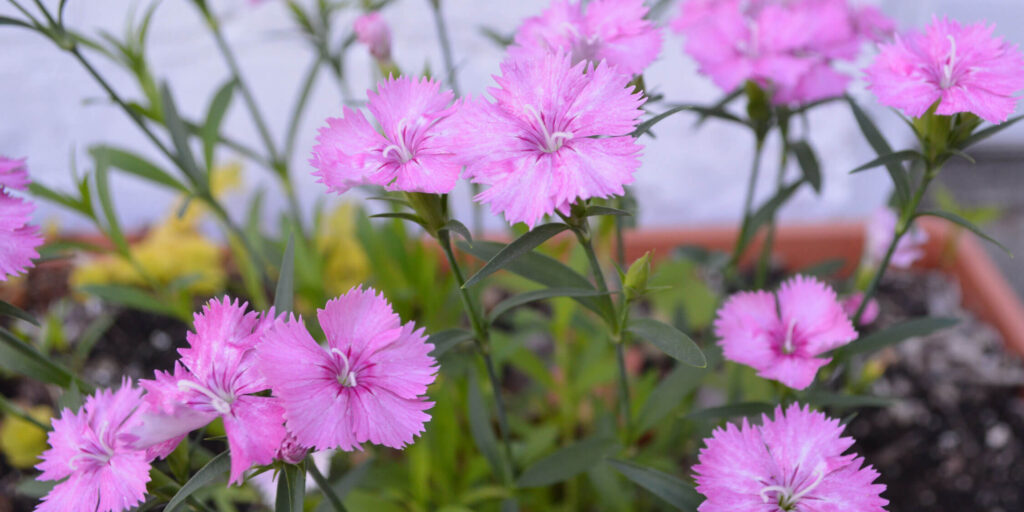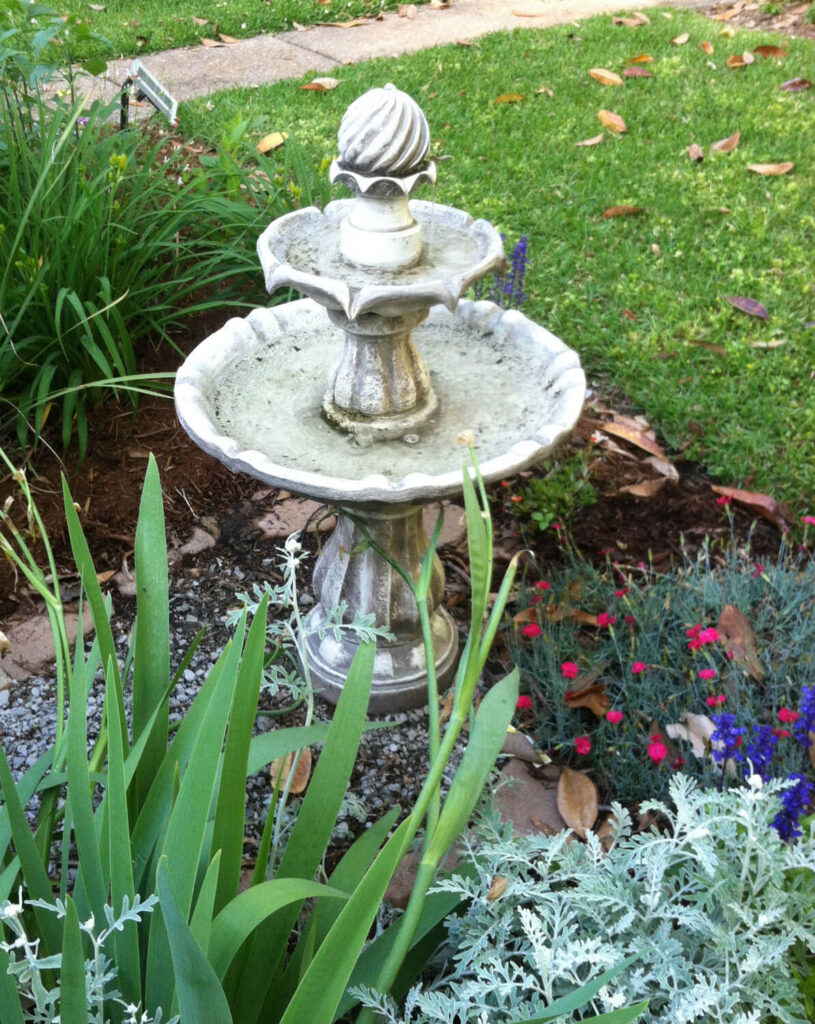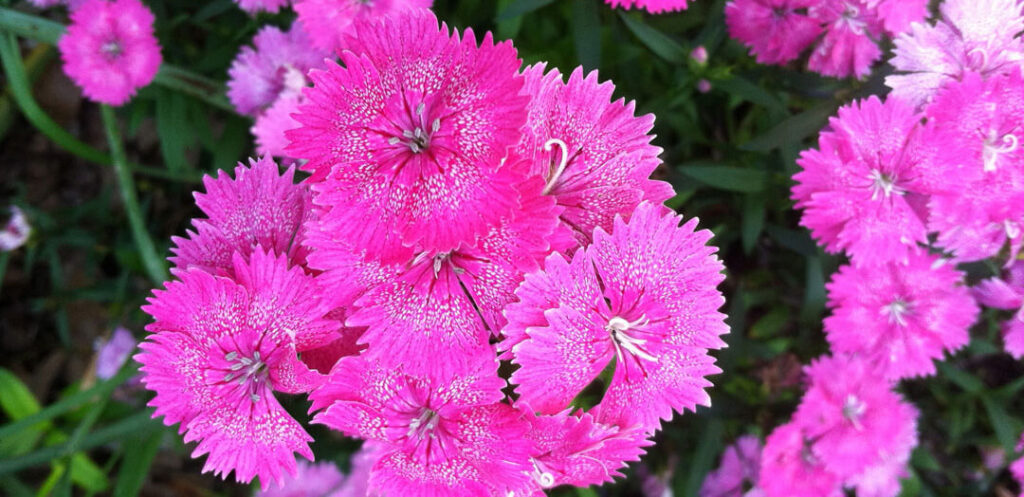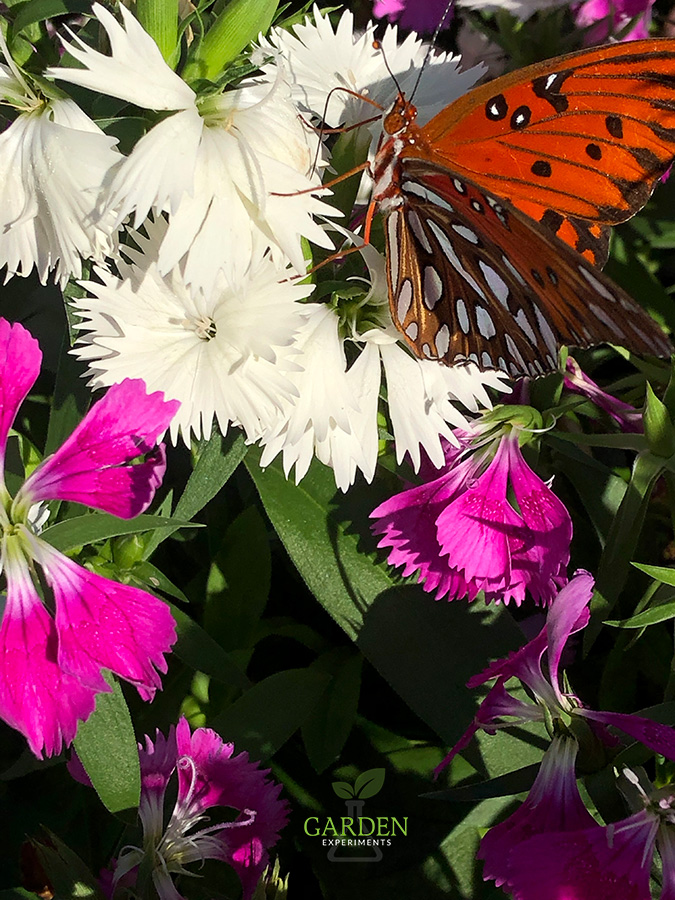The Dianthus in my garden are one of the first flowers to bloom in early spring, just after the daffodils are done. These are the low-growing variety with pink, red, or white flowers. The plants are covered in blooms and come back every year.

Many Dianthus are perennial and range in height from a low ground cover (4-5 inches) to tall carnations (around 2-3 feet). They prefer well-drained soil and will not tolerate wet conditions. This is especially true in winter. The preferred soil is neutral to slightly alkaline. Plant in full-sun to part-sun in zones 3-10.
To encourage the plant to keep blooming, remove spent blooms. However, if you want to collect seeds, you will need to allow them to fully form and dry out.
Dianthus are deer resistant and generally pretty hardy (generally, the shorter, the hardier they are), requiring little maintenance. As the plants grow and spread, you can divide them and redistribute them throughout your garden.
Pinks

Pinks are low-growing Dianthus (about 4-5 inches) with blue-green needle-like leaves. The flowers are abundant. As the plant spreads each year, you can separate the plant and replant it elsewhere. They bloom in spring or summer, depending on the variety.
Pinks have a kind of ragged edge to the flower though the blooms can be red, white, or pink or a color in-between. Fire witch is a particularly vibrant pink.
Sweet Williams – Dianthus barbatus
This plant is biennial or annual. It is tall and can grow up to 2 feet. Flowers can be single or double and have a sweet, light fragrance. You might find these seeds in some wildflower mixes—hardy to zone 4.
There are hybrids of each type of Dianthus, resulting in a wide variety of options for your garden.

Benefits of Dianthus to Wildlife
Some dianthus are particularly attractive to pollinators. You’ll find yellow and pipevine swallowtail butterflies, Gulf fritillaries, bees, and more feeding on the blooms.
Many Dianthus are deer resistant, which is good news for those of us in heavily populated areas.

